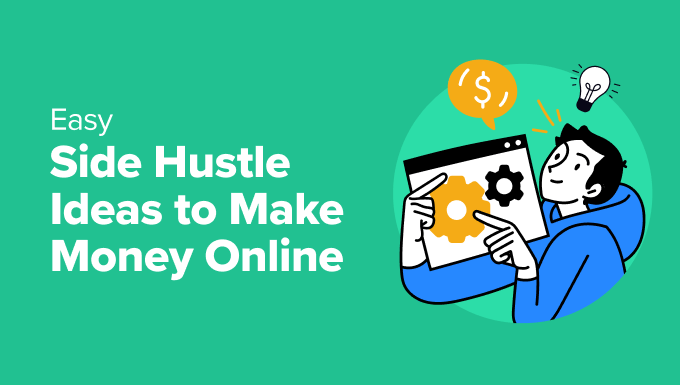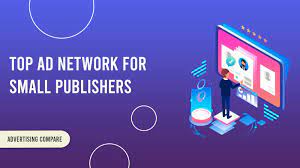Here’s a step-by-step guide to setting up your blog and monetizing it to earn your first $1,000. This detailed process will help you move from the initial setup phase to generating income.
Step-by-Step Setup to Start a Blog and Earn Your First $1,000
Step 1: Choose a Profitable Niche
A niche is essential for focusing your blog and targeting a specific audience. Choose a niche based on the following:
- Interest & Expertise: Make sure the topic excites you and is something you are knowledgeable about.
- Profitability: Pick a niche that is profitable and has affiliate programs, digital products, and a large target audience.
- Examples of profitable niches: Health & fitness, finance, personal development, travel, lifestyle, tech, etc.
How to choose the best niche:
- Keyword research: Use tools like Google Keyword Planner, SEMrush, or Ahrefs to find keywords with good search volume but relatively low competition.
- Check competition: If your niche is already overcrowded, you might want to narrow down your focus (long-tail keywords) to stand out.
Step 2: Get a Domain Name and Hosting
- Choose a Domain Name: This is the web address of your blog (e.g., www.yourblog.com). Keep it short, relevant to your niche, easy to spell, and memorable.
- Buy Web Hosting: A hosting provider stores your blog content and makes it accessible online. Some popular hosting providers for beginners are:
- Bluehost (highly recommended for WordPress users)
- SiteGround
- HostGator
- Ensure they provide a one-click WordPress install.
- Check the reliability, uptime, and customer support reviews.
- Look for good value for money (pricing, scalability, etc.).
Step 3: Install WordPress
WordPress is the most popular platform for blogging. Once you’ve purchased hosting, you can easily install WordPress:
- One-click installation: Most hosting providers offer an easy one-click WordPress install option.
- Manual installation: If required, follow the instructions on the hosting provider’s website for manual installation.
Step 4: Choose and Install a Theme
A theme determines the look and feel of your blog. WordPress offers free and premium themes:
- Free Themes: Great for beginners. You can find themes in the WordPress theme directory.
- Premium Themes: Paid themes give you more flexibility and better features (e.g., from ThemeForest or Elegant Themes).
How to install a theme:
- Go to your WordPress dashboard.
- Navigate to “Appearance” > “Themes” > “Add New.”
- Search for your chosen theme and click “Install” then “Activate.”
Step 5: Customize Your Blog
Once your theme is installed, customize it to reflect your brand and niche:
- Customize the site title and tagline.
- Add a logo (use tools like Canva or hire a designer).
- Set your blog’s color scheme and font style for a professional appearance.
- Set up important pages:
- About: Tell your readers who you are and what your blog is about.
- Contact: Make it easy for readers and potential business partners to reach you.
- Privacy Policy & Terms of Service: Make sure you comply with legal requirements.
Step 6: Write Your First Blog Posts
Create valuable content for your audience. Focus on solving their problems or answering their questions:
- Research your audience’s pain points: Use tools like Answer the Public or forums like Quora to identify topics people are interested in.
- Write in-depth, long-form content: Google favors long-form content (1,500+ words). Break your content into sections with headers for readability.
- Optimize for SEO:
- Use keywords naturally.
- Write an attention-grabbing title (include keywords).
- Use internal linking to connect your blog posts.
- Add meta descriptions and alt text for images.
Step 7: Optimize Your Blog for Search Engines (SEO)
SEO is crucial for driving organic traffic to your blog. Here’s how to optimize your blog:
- Install an SEO plugin like Yoast SEO or Rank Math.
- Optimize on-page SEO:
- Use your target keyword in the post title, URL, and meta description.
- Add relevant internal and external links.
- Create high-quality content:
- Focus on answering the user’s intent behind the search query.
- Use proper headings and formatting for readability.
- Build backlinks:
- Guest post on other blogs.
- Get mentioned in media outlets or high-authority websites.
Step 8: Drive Traffic to Your Blog
Without traffic, you won’t make money. Here’s how to get visitors:
- Search Engine Optimization (SEO): Rank your blog posts on search engines to attract organic traffic.
- Social Media Marketing:
- Share your posts on Facebook, Twitter, Pinterest, Instagram, and LinkedIn.
- Engage with followers and join relevant groups to drive traffic.
- Email Marketing:
- Create a lead magnet (eBook, checklist, etc.) to capture email addresses.
- Set up an email autoresponder and send traffic back to your blog.
- Networking:
- Comment on other blogs, forums, and communities in your niche.
- Collaborate with other bloggers for cross-promotion.
Step 9: Monetize Your Blog
Once you have enough traffic, you can start making money from your blog. Here are some monetization strategies:
1. Affiliate Marketing
Promote products/services and earn a commission for each sale:
- Join affiliate programs like Amazon Associates, ShareASale, or niche-specific programs.
- Insert affiliate links in your blog posts or product reviews.
2. Display Ads
Use platforms like Google AdSense to display ads on your blog:
- Once your blog has a decent amount of traffic, apply to AdSense for ad revenue.
- You can also consider other ad networks like Media.net or Ezoic.
3. Sponsored Posts
Once your blog gains traction, companies will pay you to write about their products or services:
- You can pitch brands or wait for them to reach out.
- Make sure your sponsored posts align with your audience’s interests.
4. Sell Digital Products
Create your own products, such as eBooks, courses, printables, or digital templates:
- Use your blog to promote and sell these products.
- You can use platforms like Gumroad or Etsy for selling digital products.
5. Offer Services
Offer services such as coaching, consulting, or freelance work:
- You can use your blog as a portfolio to showcase your expertise.
Step 10: Track Your Progress and Scale
Once you start making money, it’s important to track your progress:
- Google Analytics: Track visitors, page views, and conversions to see what works.
- Conversion tracking: Set up conversion tracking to see which monetization methods are generating revenue.
- Reinvest in your blog: Use your earnings to improve your content, advertising, and tools.
Step 11: Be Consistent and Patient
Building a blog that generates $1,000 takes time. Continue producing high-quality content, optimizing for SEO, and experimenting with different monetization methods. It may take several months to see consistent traffic and revenue, so be patient and keep learning.
Conclusion
Making your first $1,000 from blogging is achievable with the right approach. By following these steps, you’ll set up your blog, grow your audience, and begin monetizing effectively. Remember that blogging is a marathon, not a sprint. Consistency, patience, and quality content will help you reach your first $1,000 and beyond!




